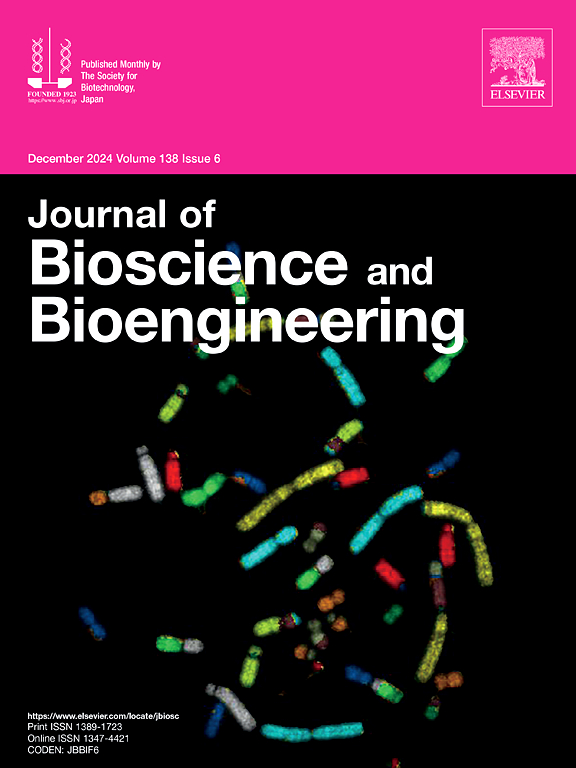Antibiofilm action of phytochemicals on Enterobacteriaceae
IF 2.9
4区 生物学
Q3 BIOTECHNOLOGY & APPLIED MICROBIOLOGY
引用次数: 0
Abstract
The biofilm-associated infections pose a great threat to human health. The available drugs are not effective due to the formation of biofilm and limited access to underlying pathogens. The initiation of biofilm formation occurs through adhesion, facilitated by the adhesin protein MrkD1P in the fimbriae tip. This study targeted the MrkD1P protein and employed plant phenols to inhibit biofilm formation in Escherichia coli, Salmonella typhi, and Klebsiella pneumoniae, as major Enterobacteriaceae species. A homology model was constructed for the MrkD1P protein, and 44 phenolic derivatives were assessed for their interaction with this protein. Caffeic acid and 3-hydroxybenzoic acid exhibited the best binding-free energies of 29.61 kcal/mol and 24.24 kcal/mol, respectively. Using a microtiter plates-based minimum biofilm inhibitory concentration assay, it was found that doses of these compounds ranging from 2 to 256 mg/mL effectively reduced biofilm formation. The biofilm inhibition assay demonstrated over 80 % reduction of biofilms in all tested species at inhibitory doses. Further analysis through field emission gun scanning electron micrographs revealed that the compounds disintegrated fimbriae on cell surfaces. Additionally, the re-formation assay demonstrated the inability of biofilm-associated cells to re-form the biofilm on fresh surfaces due to fimbriae inhibition. This study highlights the antibiofilm capabilities of caffeic acid and 3-hydroxybenzoic acid, indicating their potential as effective treatments for illnesses caused by Enterobacteriaceae biofilms.

植物化学物质对肠杆菌的抗生物膜作用。
生物膜相关感染对人类健康构成极大威胁。由于生物膜的形成和接触潜在病原体的途径有限,现有的药物无效。生物膜的形成是通过黏附发生的,由黏附蛋白MrkD1P在菌毛尖端促进。本研究以MrkD1P蛋白为靶点,利用植物酚类物质抑制大肠杆菌、伤寒沙门氏菌和肺炎克雷伯菌作为肠杆菌科主要菌种的生物膜形成。构建了MrkD1P蛋白的同源性模型,并对44种酚类衍生物与该蛋白的相互作用进行了评估。咖啡酸和3-羟基苯甲酸的结合能最高,分别为29.61 kcal/mol和24.24 kcal/mol。使用基于微滴板的最低生物膜抑制浓度测定,发现这些化合物的剂量范围为2至256mg /mL,有效地减少了生物膜的形成。生物膜抑制实验表明,在抑制剂量下,所有被试物种的生物膜减少了80%以上。通过场发射枪扫描电子显微图进一步分析表明,化合物分解了细胞表面的菌膜。此外,重组实验表明,由于菌毛抑制,生物膜相关细胞无法在新鲜表面重组生物膜。这项研究强调了咖啡酸和3-羟基苯甲酸的抗生物膜能力,表明它们有可能有效治疗肠杆菌科生物膜引起的疾病。
本文章由计算机程序翻译,如有差异,请以英文原文为准。
求助全文
约1分钟内获得全文
求助全文
来源期刊

Journal of bioscience and bioengineering
生物-生物工程与应用微生物
CiteScore
5.90
自引率
3.60%
发文量
144
审稿时长
51 days
期刊介绍:
The Journal of Bioscience and Bioengineering is a research journal publishing original full-length research papers, reviews, and Letters to the Editor. The Journal is devoted to the advancement and dissemination of knowledge concerning fermentation technology, biochemical engineering, food technology and microbiology.
 求助内容:
求助内容: 应助结果提醒方式:
应助结果提醒方式:


